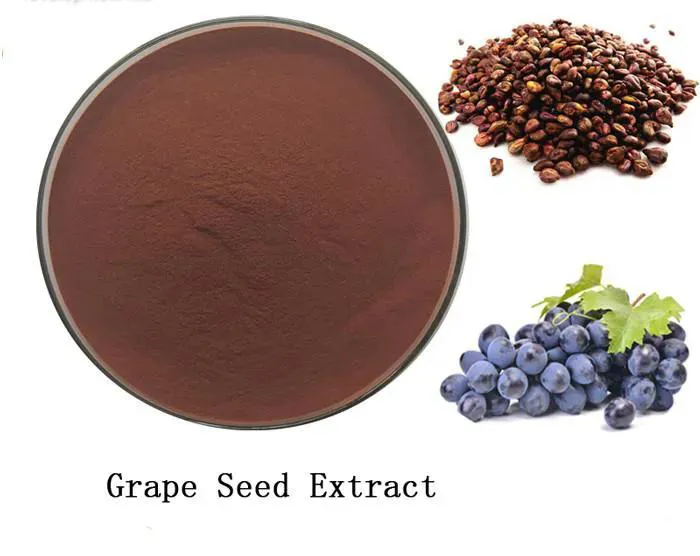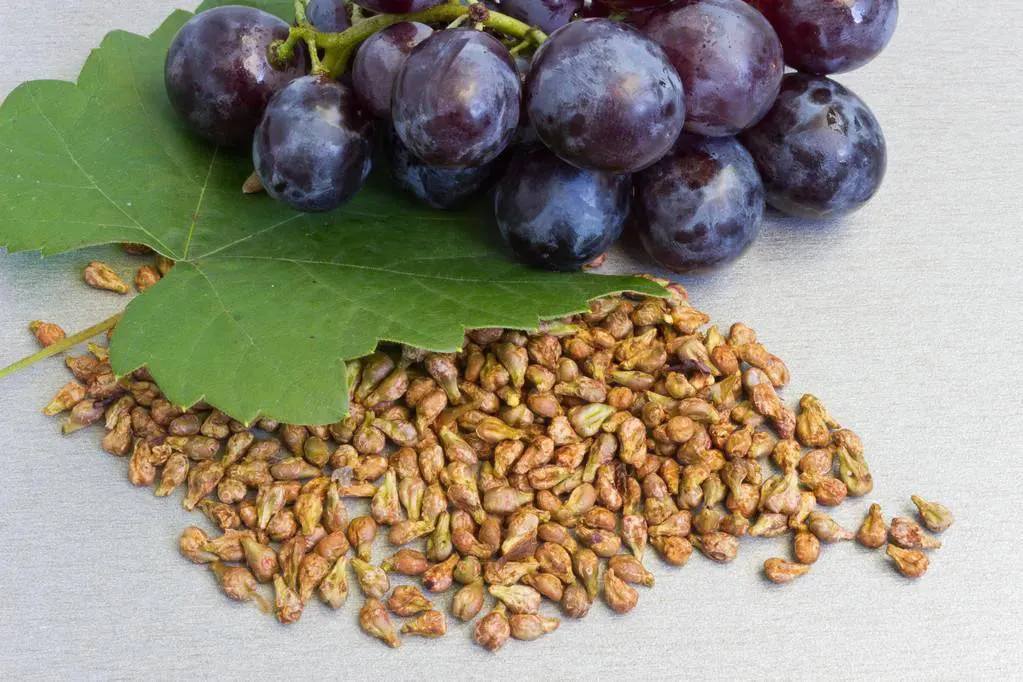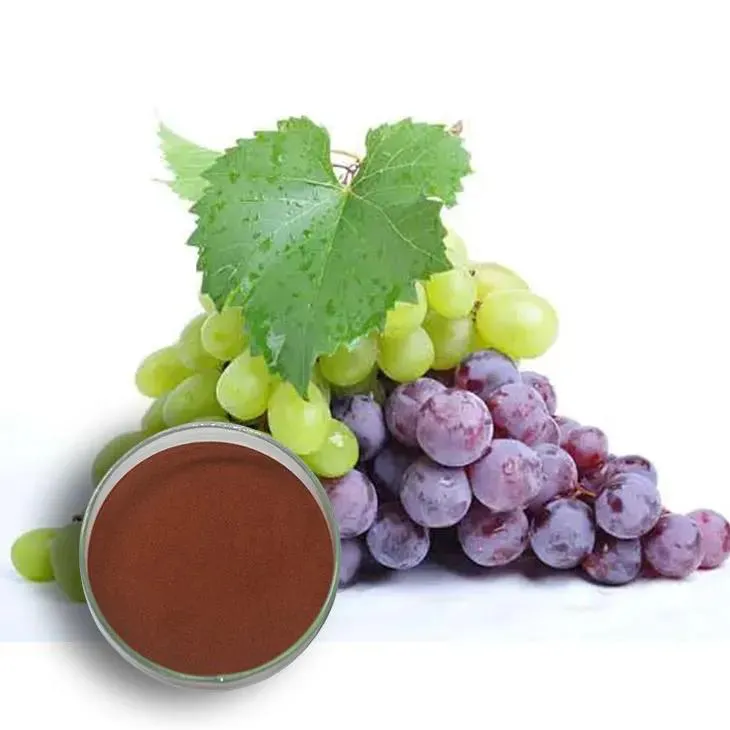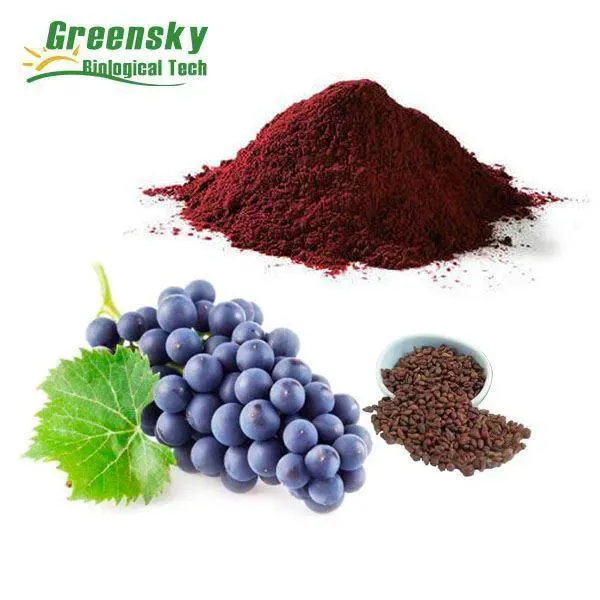- 0086-571-85302990
- sales@greenskybio.com
Grape Seed Extract in Ophthalmology: A Comprehensive Review of Its Application in Diabetic Retinopathy
2024-08-15

1. Introduction
Diabetic retinopathy (DR) is a significant contributor to blindness on a global scale. It is a microvascular complication associated with diabetes mellitus. As the prevalence of diabetes continues to rise, so does the burden of DR. Grape Seed Extract (GSE), which is rich in polyphenols, has emerged as a potential agent with beneficial effects in ophthalmology, particularly in relation to DR. This review aims to provide a comprehensive exploration of the application of GSE in DR.

2. Pathophysiology of Diabetic Retinopathy
2.1 Hyperglycemia - Induced Changes
Hyperglycemia is the central factor in the development of DR. It leads to the activation of multiple pathways. One of the key pathways is the polyol pathway. Elevated glucose levels cause an increase in aldose reductase activity, which converts glucose to sorbitol. The accumulation of sorbitol within cells results in osmotic stress, leading to cell damage. Additionally, hyperglycemia promotes the formation of advanced glycation end - products (AGEs). AGEs can bind to their receptors (RAGE), activating a cascade of inflammatory and oxidative stress responses.2.2 Oxidative Stress
In DR, there is an imbalance between the production of reactive oxygen species (ROS) and the antioxidant defense mechanisms. High glucose levels increase ROS production through mitochondrial dysfunction and activation of NADPH oxidase. The excessive ROS can damage retinal cells, including endothelial cells, pericytes, and photoreceptors.2.3 Inflammatory Response
DR is also characterized by a chronic inflammatory state. The activation of NF - κB, a key transcription factor in inflammation, is increased in DR. This leads to the up - regulation of various inflammatory cytokines such as interleukin - 1β (IL - 1β), interleukin - 6 (IL - 6), and tumor necrosis factor - α (TNF - α). These cytokines can further promote vascular leakage and cell death in the retina.2.4 Vascular Abnormalities
The retinal vasculature is severely affected in DR. There is increased vascular permeability, endothelial cell dysfunction, and angiogenesis. The loss of pericytes, which are important for maintaining the integrity of the retinal blood vessels, is also a characteristic feature. Abnormal angiogenesis, in the form of neovascularization, can lead to vitreous hemorrhage and retinal detachment, ultimately causing blindness.
3. How Grape Seed Extract Can Target Pathological Pathways in Diabetic Retinopathy
3.1 Antioxidant Properties
GSE is a rich source of phenolic compounds, such as proanthocyanidins. These compounds have strong antioxidant properties. They can scavenge ROS, thereby reducing oxidative stress in the retina. By neutralizing free radicals, GSE can protect retinal cells from damage. For example, in vitro studies have shown that GSE can reduce the levels of lipid peroxidation products in retinal cells exposed to high - glucose conditions.3.2 Anti - Inflammatory Effects
GSE has been shown to modulate the inflammatory response in DR. It can inhibit the activation of NF - κB, thereby reducing the production of inflammatory cytokines. In animal models of DR, GSE treatment has been associated with decreased levels of IL - 1β, IL - 6, and TNF - α. This anti - inflammatory action can help to reduce vascular leakage and cell death in the retina.3.3 Anti - Angiogenic Activity
Abnormal angiogenesis is a major complication in DR. GSE has demonstrated anti - angiogenic properties. It can inhibit the growth and migration of endothelial cells, which are crucial steps in angiogenesis. This may be mediated through the modulation of vascular endothelial growth factor (VEGF) signaling. By suppressing angiogenesis, GSE may help to prevent the development of neovascularization in the retina.
4. Safety and Efficacy of Grape Seed Extract
4.1 Pre - Clinical Studies
In vitro and in vivo pre - clinical studies have provided evidence for the potential efficacy of GSE in DR. In cell culture studies, GSE has been shown to protect retinal cells from high - glucose - induced damage. Animal models of DR, such as streptozotocin - induced diabetic rats, have also demonstrated beneficial effects of GSE treatment. These include reduced retinal vascular leakage, decreased inflammation, and improved retinal function. However, it is important to note that the dosages and treatment durations used in these pre - clinical studies may not directly translate to human applications.4.2 Clinical Studies
Although there are limited clinical studies on the use of GSE in DR, some early findings are promising. A small - scale clinical trial has reported that GSE supplementation may improve visual acuity in patients with mild - to - moderate DR. However, larger, well - designed clinical trials are still needed to confirm these results. In terms of safety, GSE has generally been well - tolerated in the reported clinical studies. However, potential side effects such as gastrointestinal disturbances may occur in some individuals.
5. GSE as an Adjunctive Therapy
5.1 Current Treatments for Diabetic Retinopathy
Current treatments for DR mainly include laser photocoagulation, intravitreal injections of anti - VEGF agents, and corticosteroids. Laser photocoagulation is used to destroy abnormal blood vessels and reduce retinal edema. Anti - VEGF agents, such as ranibizumab and aflibercept, are highly effective in reducing neovascularization and improving visual acuity. Corticosteroids can also reduce inflammation and macular edema. However, these treatments have their limitations. For example, laser photocoagulation may cause damage to surrounding healthy tissues, and anti - VEGF agents require repeated injections, which can be associated with potential complications.5.2 Potential of GSE as an Adjunct
GSE has the potential to be used as an adjunctive therapy to current treatments. Its antioxidant, anti - inflammatory, and anti - angiogenic properties can complement the effects of existing treatments. For example, GSE may enhance the anti - angiogenic effect of anti - VEGF agents, while also reducing the associated inflammation. Additionally, GSE may help to protect retinal cells from the side - effects of laser photocoagulation. However, more research is needed to determine the optimal combination of GSE with current treatments and the appropriate dosing regimens.6. Challenges and Opportunities in Translating Research Findings into Clinical Practice
6.1 Standardization of Grape Seed Extract
One of the major challenges in translating GSE research into clinical practice is the lack of standardization of GSE products. Different GSE products may vary in their composition, potency, and bioavailability. This makes it difficult to compare the results of different studies and to determine the optimal dosage for clinical use. There is a need for standardization of GSE production and quality control to ensure consistent and reliable therapeutic effects.6.2 Patient Compliance
Another challenge is patient compliance. GSE is typically administered as a dietary supplement, and long - term use may be required to achieve significant benefits in DR. However, patients may have difficulty adhering to a regular supplementation regimen. This may be due to factors such as cost, inconvenience, or lack of awareness of the potential benefits. Strategies to improve patient compliance, such as patient education and more convenient formulations, need to be explored.6.3 Regulatory Considerations
Regulatory issues also pose a challenge. Since GSE is a dietary supplement in many countries, it is not subject to the same strict regulatory requirements as drugs. This may lead to concerns about the safety and efficacy of GSE products in the market. There is a need for more regulatory oversight to ensure that GSE products are of high quality and that their claims are supported by scientific evidence.6.4 Opportunities for Future Research
Despite these challenges, there are also significant opportunities for future research. Further studies are needed to elucidate the exact mechanisms of action of GSE in DR at the molecular level. Larger, multicenter clinical trials are required to confirm the efficacy and safety of GSE in different stages of DR. Additionally, research on the combination of GSE with other natural products or drugs may open up new avenues for the treatment of DR.7. Conclusion
In conclusion, DR is a complex and serious eye disease with a significant impact on vision. Grape seed extract shows potential in targeting multiple pathological pathways involved in DR through its antioxidant, anti - inflammatory, and anti - angiogenic properties. While pre - clinical and some clinical studies have provided evidence for its safety and efficacy, more research is needed. The challenges in translating research findings into clinical practice, such as standardization, patient compliance, and regulatory considerations, need to be addressed. However, with further research, GSE may emerge as a valuable adjunctive therapy in the management of DR, offering new hope for patients with this debilitating disease.
FAQ:
1. What is the pathophysiology of diabetic retinopathy?
Diabetic retinopathy is a complex eye disorder. High blood sugar levels in diabetes can damage the blood vessels in the retina. Initially, there may be microvascular changes such as thickening of the basement membrane of retinal capillaries. This can lead to capillary non - perfusion, microaneurysm formation, and leakage of fluid and blood components. As the disease progresses, there is neovascularization, which is the growth of abnormal new blood vessels in the retina. These new vessels are fragile and can cause further problems like vitreous hemorrhage and retinal detachment.
2. How can grape seed extract target the pathological pathways in diabetic retinopathy?
Grape seed extract contains various bioactive compounds. It has antioxidant properties that can scavenge free radicals, which are increased in diabetic retinopathy due to high blood sugar - induced oxidative stress. It may also modulate inflammatory pathways. In diabetic retinopathy, there is chronic inflammation in the retina, and GSE can potentially reduce the production of inflammatory cytokines. Additionally, GSE may have an effect on vascular endothelial growth factor (VEGF) - related pathways. VEGF is a key factor in the neovascularization process in diabetic retinopathy, and GSE may help regulate its activity.
3. What is the evidence for the safety of grape seed extract in the context of diabetic retinopathy?
Several pre - clinical and some clinical studies have investigated the safety of GSE. In pre - clinical studies on animal models, no significant adverse effects related to GSE administration have been observed at appropriate dosages. In human clinical trials, when GSE is given in recommended doses, it has generally been well - tolerated. However, more long - term and large - scale studies are still needed to comprehensively assess its safety, especially in different patient populations with diabetic retinopathy.
4. How effective is grape seed extract in treating diabetic retinopathy?
The effectiveness of GSE in diabetic retinopathy is still being explored. Some studies have shown improvements in certain parameters. For example, there have been reports of reduced retinal leakage and improvement in retinal microvascular function. However, the results are not entirely conclusive. Some studies may show only mild to moderate effects, and more high - quality, randomized, controlled trials are required to firmly establish its efficacy.
5. What are the challenges in translating research findings on GSE in diabetic retinopathy into clinical practice?
One of the main challenges is the lack of large - scale, high - quality clinical trials. Current studies often have limitations in sample size, study design, or duration. Another challenge is standardizing the dosage and formulation of GSE. Different products may have varying concentrations of active compounds. There is also the issue of patient compliance, as GSE may need to be taken for a long period for optimal results. Additionally, integrating GSE as an adjunctive therapy with existing treatments requires careful consideration of potential drug - drug interactions.
Related literature
- The Role of Grape Seed Proanthocyanidins in Diabetic Retinopathy: A Review of Mechanisms and Clinical Evidence"
- "Grape Seed Extract and Ocular Health: Implications for Diabetic Retinopathy Management"
- "Antioxidant Therapy with Grape Seed Extract in Diabetic Retinopathy: Current State and Future Perspectives"
- ▶ Hesperidin
- ▶ citrus bioflavonoids
- ▶ plant extract
- ▶ lycopene
- ▶ Diosmin
- ▶ Grape seed extract
- ▶ Sea buckthorn Juice Powder
- ▶ Beetroot powder
- ▶ Hops Extract
- ▶ Artichoke Extract
- ▶ Reishi mushroom extract
- ▶ Astaxanthin
- ▶ Green Tea Extract
- ▶ Curcumin Extract
- ▶ Horse Chestnut Extract
- ▶ Other Problems
- ▶ Boswellia Serrata Extract
- ▶ Resveratrol Extract
- ▶ Marigold Extract
- ▶ Grape Leaf Extract
- ▶ blog3
-
Epimedium extract powder
2024-08-15
-
Panax Ginseng Leaf Extract
2024-08-15
-
Mango flavored powder
2024-08-15
-
Eucommia Ulmoides Extract
2024-08-15
-
Peppermint Extract Powder
2024-08-15
-
Garcinia Cambogia Extract
2024-08-15
-
Moringa powder
2024-08-15
-
Jujube Extract
2024-08-15
-
Almond Extract Powder
2024-08-15
-
melatonin extract
2024-08-15





















